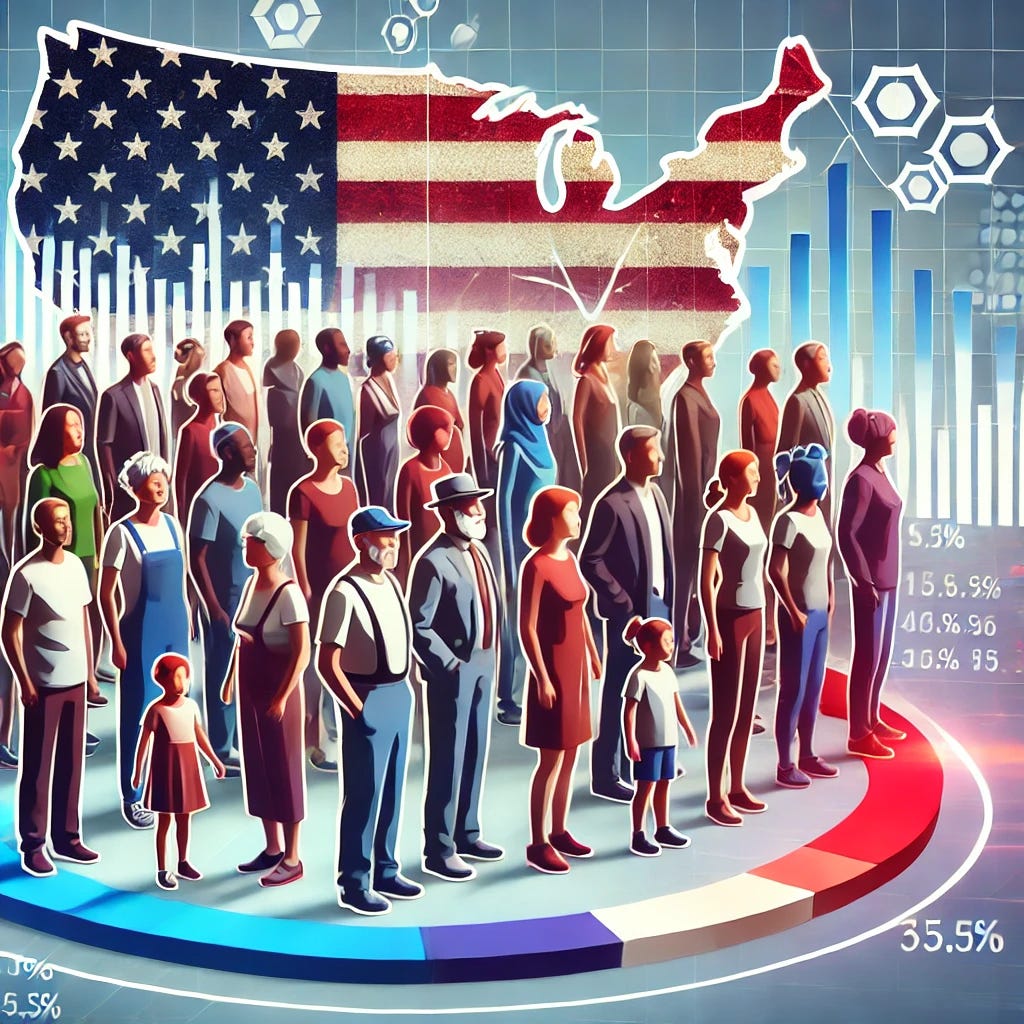Bridging the Divide: What the 2024 Election Map Tells Us About Economic Disparity in America
The 2024 election map is more than a snapshot of political affiliations — it is a mirror reflecting the economic and systemic inequities that have deepened across the United States. While the map paints a stark contrast between Republican-dominated red areas and Democratic-leaning blue regions, its deeper story lies in the socio-economic realities that underpin these divisions. The map serves as a wake-up call, urging policymakers and citizens alike to confront the economic and cultural divides that threaten the nation’s unity.
Red America: Rural Struggles and Economic Stagnation
The vast red areas dominating the map largely correspond to rural regions and working-class communities. These areas have borne the brunt of economic stagnation, the decline of manufacturing and agriculture, and limited access to healthcare, education, and infrastructure. As industries left and jobs dried up, frustration and discontent grew, creating fertile ground for political rhetoric that promises to revive a bygone era of prosperity.
For many in these regions, the political divide is not just about ideology but about survival. Promises of economic revitalization resonate deeply, even when tangible results remain elusive. This discontent is further exacerbated by feelings of being ignored or misunderstood by urban-centric policies that fail to address the unique challenges of rural America.
Blue America: Prosperity with Persistent Challenges
In contrast, the concentrated blue regions on the map, primarily urban centers and suburban strongholds, represent hubs of economic opportunity, innovation, and cultural diversity. Cities are often engines of growth, offering access to education, technology, and higher-paying jobs. However, these regions are not without their own challenges. Income inequality, skyrocketing housing costs, and overburdened public services create a different kind of economic disparity that disproportionately affects lower-income residents.
Urban areas may project an image of prosperity, but the reality is that many residents struggle to keep pace with rising costs and dwindling opportunities for upward mobility. This disconnect between the apparent wealth of cities and the struggles of their inhabitants contributes to the perception of elitism, fueling resentment in rural areas.
The Economic Divide: A Chasm That Mirrors Political Polarization
The economic disparities represented by this map are deeply intertwined with political polarization. Rural voters often see urban areas as symbols of a system that prioritizes corporate interests and progressive social policies over the needs of the working class. Meanwhile, urban voters may view rural areas as resistant to change and overly reliant on outdated industries.
This dynamic creates a vicious cycle. Economic struggles drive political discontent, which in turn leads to policies that further entrench divisions rather than addressing the root causes. Both rural and urban communities suffer when the focus shifts from solving problems to scoring political points.
The Need for a Unified Strategy
To bridge these divides, the United States needs a political and economic strategy that transcends party lines and addresses the systemic inequities affecting both rural and urban communities. Here are some key steps toward achieving this goal:
Investing in Rural America: Revitalize rural economies through investments in infrastructure, broadband access, and job creation in industries such as renewable energy, sustainable agriculture, and small business development.
Addressing Urban Challenges: Implement policies to tackle income inequality, affordable housing shortages, and access to quality education and healthcare in urban areas.
Strengthening Education and Job Training: Expand access to education and vocational training programs that prepare workers for the jobs of the future, regardless of their location.
Promoting Dialogue and Understanding: Foster programs and initiatives that encourage dialogue between rural and urban communities, breaking down stereotypes and building mutual understanding.
Reforming Campaign Strategies: Encourage political parties to adopt platforms that address the needs of all Americans, rather than focusing exclusively on their traditional voter bases.
An Inclusive Vision for America’s Future
The 2024 election map is not just a reflection of political preferences; it is a call to action. It highlights the urgent need to address the economic and social divides that fuel polarization and weaken the fabric of American democracy. The challenge is not simply to bridge the gap between red and blue but to create an inclusive system that uplifts all communities, ensuring that no one is left behind.
America’s strength lies in its diversity and resilience. By focusing on shared values and common goals — such as economic fairness, equal opportunity, and the protection of democratic institutions — the nation can begin to heal its divisions and build a future that benefits everyone. The map is a stark reminder of the work that lies ahead, but it also offers a roadmap for a better, more united America.


